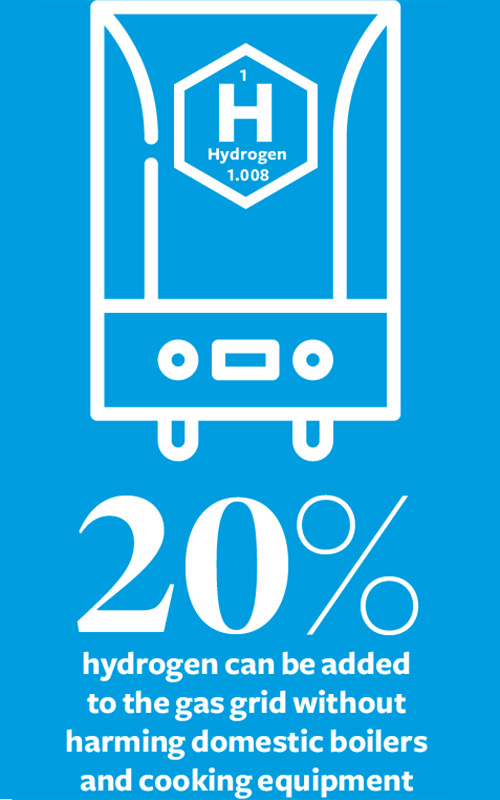Oil and gas in a decarbonised world
With the growing momentum behind the transition to a low-carbon economy, oil and gas companies are taking bold steps to refashion themselves as the low-carbon energy companies of the future, says Jeremy Bowden

Faced with continuously falling renewables’ costs and expanding market share, along with growing determination among some nations to clamp down on carbon emissions, major European oil companies – and many smaller ones, too – are increasingly looking to invest in lower-carbon and non-fossil fuel areas of the energy sector.
Efforts to clamp down on emissions are particularly strong in power generation, but even in transportation, many countries – including the UK and France – are setting time limits on combustion engines, beyond which they can no longer be sold. There are already restrictions on diesel use in many cities. Car manufacturers are switching investment to electric vehicles, so oil companies need to be prepared to provide alternative fuels and charging infrastructure. And in the heating sector, hydrogen could soon be a major component, along with greater electrification.
‘Oil companies are looking at a range of areas, some for commercial and some for operational reasons – including supplying energy to their own facilities,’ says Gilein Steensma, Regional Director of New Energy at Advisian, part of the WorleyParsons group. ‘They have seen the societal drivers and regulations coming to curb climate change and try to work in the areas where they feel comfortable – such as offshore and in the process side of the energy business. So offshore wind is big, along with energy storage components such as batteries or hydrogen.’
Shell, for example, is investing in wind and hydrogen production, and is installing hydrogen refuelling and electric vehicle charging points at its petrol stations. It recently bought electric vehicle charging company NewMotion, along with its 30,000 charging stations. And in late May, BP invested in StoreDot, the developer of an ultra-fast charging battery system. BP Ventures says the investment is part of a push to tap into the growth in electric vehicle technologies and infrastructure.
BP will continue to invest in emerging new businesses and technologies to ensure that the company ‘stays at the forefront of changing global needs in the energy transition,’ said CEO Bob Dudley in his Q4 2017 results conference call in March. ‘It's not a race to renewables, it’s a race to lower greenhouse gas emissions,’ he added. Overall, BP says it will spend about US$0.5bn/year on clean energy.
Top investors
Shell plans to spend more – US$1-2bn/year – on clean energy by 2020. It also aims to reduce the net carbon footprint of its operations and energy products by 50%
by 2050 through a shift to gas, biofuels and green electricity – along with developing carbon capture and storage capacity. Many of Shell’s investments assume government-imposed carbon prices, which Shell considers essential for reducing emissions.
Elsewhere in Europe, Norway’s Equinor (formerly Statoil) has moved into offshore wind, including Hywind, the world’s first floating wind farm, and is heavily involved
in other renewable projects. Total is aiming highest among the majors, with a 20% renewables target, prompting a number of recent purchases, including a stake in renewable energy firm Eren and French battery maker Saft Groupe.
Like Shell – the world’s biggest liquefied natural gas (LNG) supplier – Total has also been expanding its (relatively) low-carbon gas investments, including purchasing LNG assets from ENGIE last year. ‘In oil companies there is a realisation that because renewable power is variable, there needs to be a transition until storage is developed, which means gas needs to be used as a transition fuel – they have gas and renewables departments,’ says Steensma.
Some oil companies have gone even further and moved out of oil and gas altogether. Ørsted, previously DONG (Danish Oil and Natural Gas) Energy, sold off its oil and gas business last year to become a renewable energy company focused on offshore wind.
 Decarbonising heat
Decarbonising heat

While wind, solar and other renewables are making good progress in decarbonising the power sector, and electric cars have the potential to deal with transport, there has been little progress so far on decarbonising heat. Hydrogen could be a solution, with a number of projects underway or on the drawing board. These include the HyDeploy project in north-west England, which is designed to replace natural gas supply to industry and residential consumers. If successful, it could be the first of many, providing a far cheaper means of decarbonising heating systems than electrification.
The developer, Cadent (formerly National Grid Gas Distribution), believes as much as 20% hydrogen can be added to the gas grid without harming domestic boilers and cooking equipment, and research at Keele University aims to make hydrogen use safer at higher concentrations. The plant plans to use methane as feedstock, and waste carbon would be stored in the depleted Hamilton gas field under the Irish Sea. Other parts of the UK exploring hydrogen for heating include Leeds, where Northern Gas Networks is aiming to convert the existing natural gas supply.
A role for all
Steensma is positive about the role smaller companies can play in the transition: ‘A lot of the innovation happens in the smaller companies. They have the flexibility that larger companies don’t and can pick a niche and develop that – such as optimisation of particular process or operation. Service companies have an understanding of larger oil and gas companies, and can provide sustainable solutions for these companies, depending on location.’
One such company is Petrofac, which signed an agreement in May with Transmission Capital to provide engineering services to six UK wind projects. Petrofac has already secured subsea engineering work at Lincs and Robin Rigg’s offshore wind farms, and said the latest deal was part of a wider shift into the offshore wind engineering sector.
Another offshore services company getting into renewables is Saipem; the Sapiem-7000 crane is now being used to helped manoeuvre and install wind turbines on the Hornsea One and Hywind projects in the North Sea. After Hornsea One, the vessel will complete decommissioning at BP’s nearby Miller Platform, and then Repsol’s Varg platform – illustrating its flexibility. The company says the expertise required by the two industries is broadly similar, and there is plenty of experience and knowledge in the offshore oil and gas sector that the burgeoning wind sector is keen to utilise.
Other types of company that now straddle the two industries include those providing support and facilities for offshore workers. One example, Attollo Offshore, provides accommodation rigs to both hydrocarbon and renewable offshore projects. However, Managing Director Ben Moore, is more cautious about the ease of switching from one sector to the other: ‘Offshore wind is an important sector for any growing offshore service company; projects are becoming larger, more ambitious and more technically challenging. Even though there are transferable skills, any company that feels it can directly import its services from oil and gas will find it difficult to compete. It’s a different industry – it wants to develop its own robust supply chain that can deliver on its priorities, and its goal to drive down the cost of wind energy.’
If the trend to lower carbon investments continues even as oil prices rise again, then those service companies that have not already sought a fresh niche in renewables may start looking.






Follow us
Advertise
Free e-Newsletter